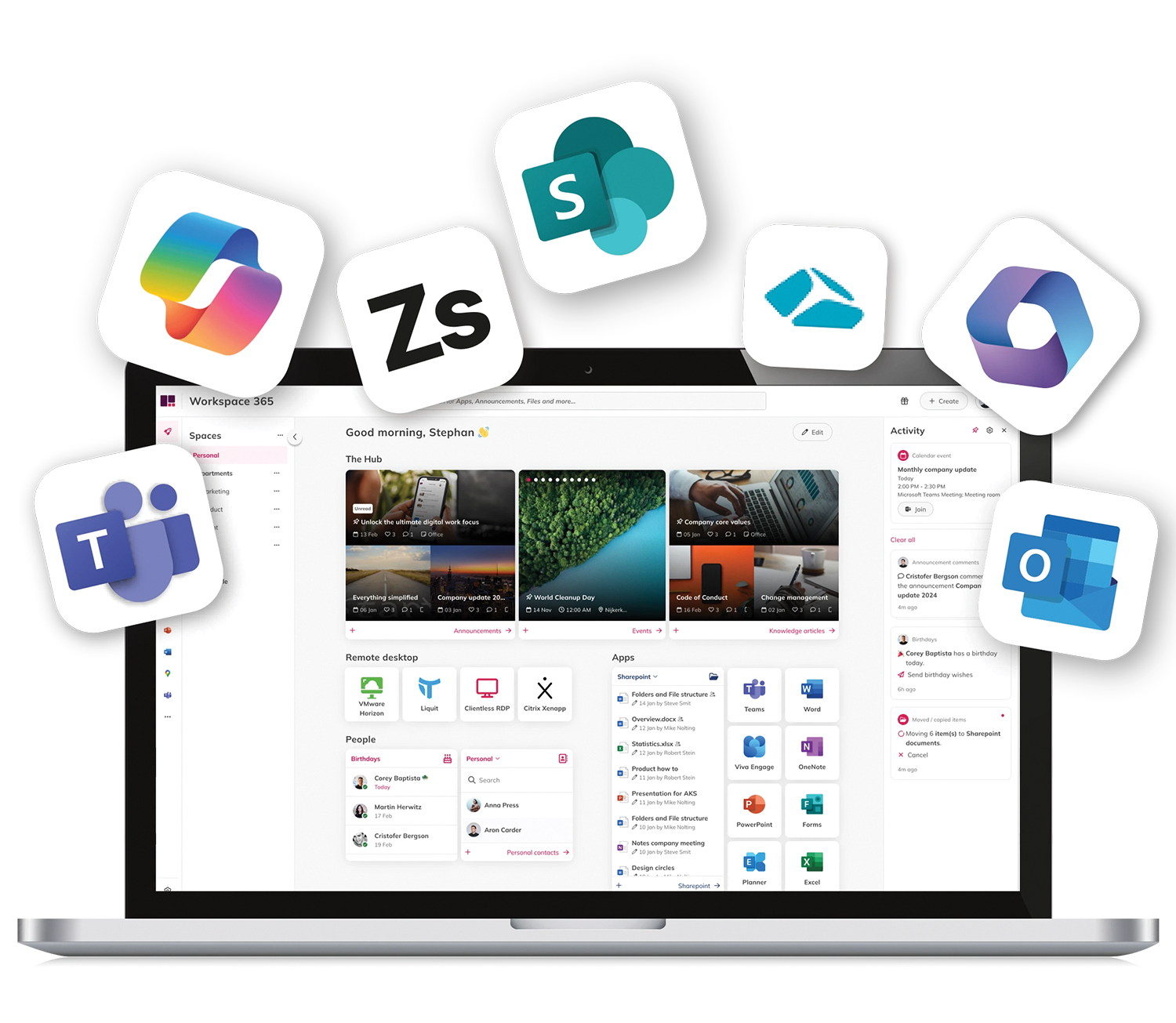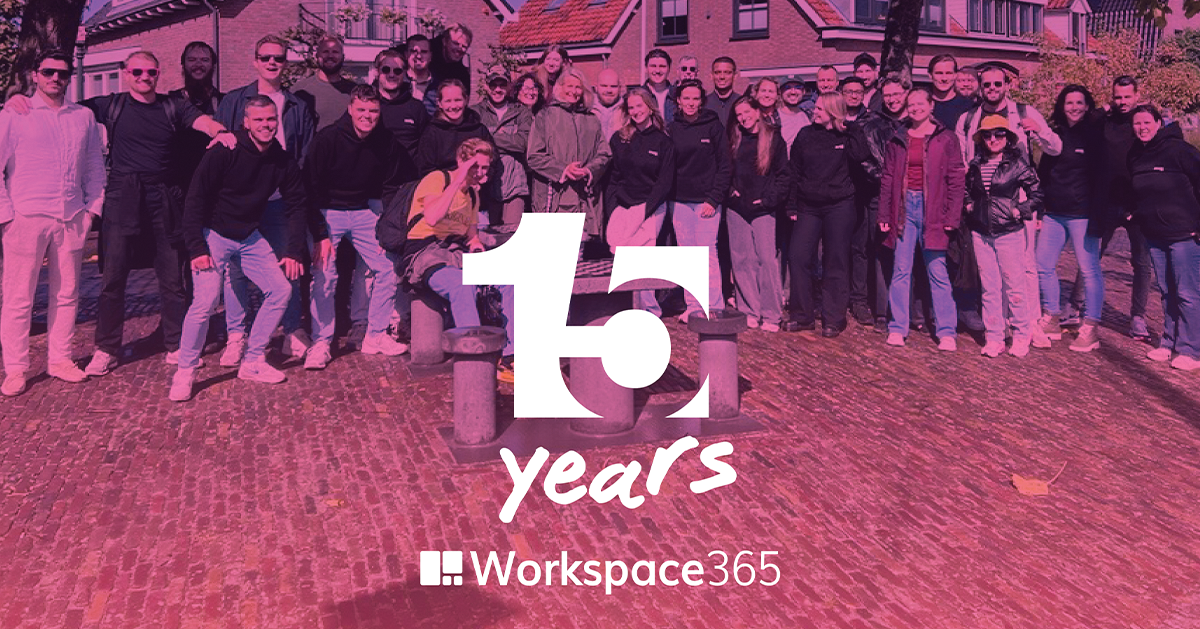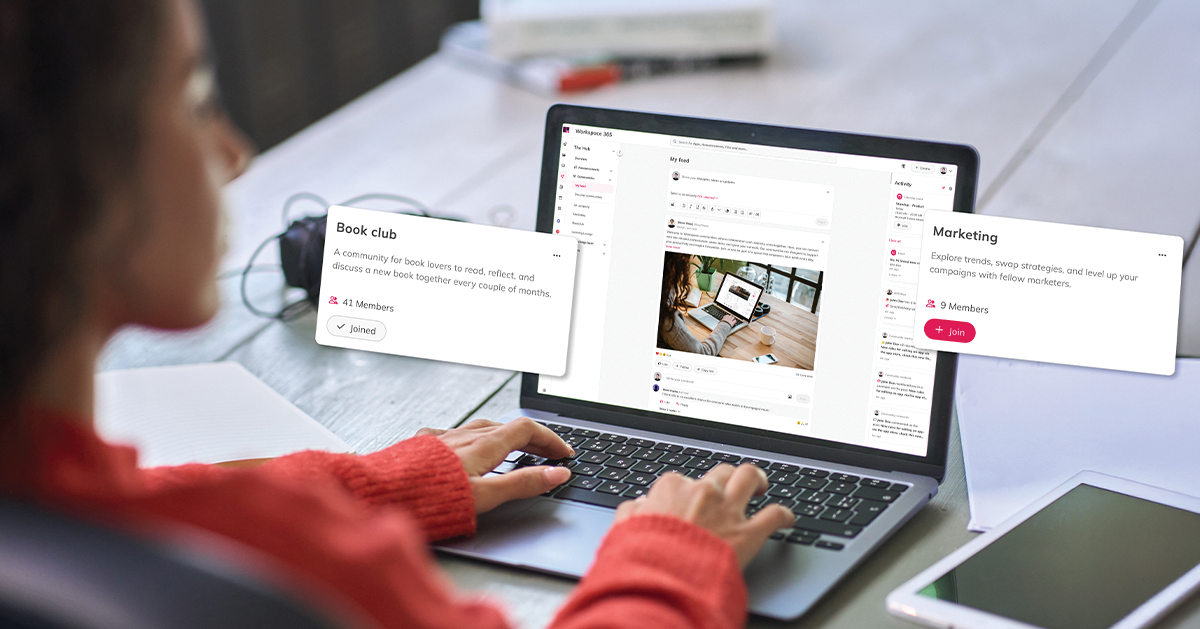How do you create the ideal digital workspace for students and teachers? On the 23rd of September 2021 our colleague Mark Godthelp, ISV Partner and Integrations Manager, talked to Jan Broeken, ICT Manager at ROC West-Brabant and director at IT-Workz to discuss the ideal digital workspace for education. In this article we’ll discuss the questions in and highlights of this interview.
In addition Christiaan Lustig, advisor in the field of digital employee experience, digital workplace and the intranet, gave an interesting presentation on the Digital Employee Experience in education. Based on his book #DEX, he talked about his experiences and what you, as an educational institution, should pay attention to with the digital employee experience, or in this case the digital experience of students and teachers.
Digital workspace for Education with Jan Broeken
The ideal digital workspace for educational institutions was mapped out based on questions. Which projects are important for education? What problems do they encounter? Which processes can be simplified? Discover the answers to these questions below.
What projects does IT-Workz see at educational institutions?
Of course, in 2020, education also had to deal with the Covid-19 pandemic and teachers had to start teaching their students via an online platform. Within the education sector, Microsoft Teams was often used at that time, but within Microsoft Teams there are not enough possibilities for education yet. Additional tools are still needed for an educational catalogue and to conduct tests, for example.
The education sector in the Netherlands has a good IT infrastructure. This is a good foundation for thinking about how to set up the ideal workspace for students and teachers. Many educational institutions are therefore working on:
- Securing the workspace for students and teachers
- Moving to the cloud
- Making the digital learning environment available at any time and any place
- Bringing together documents, applications and information
Do you think that an educational institution will still need a VDI in three years’ time?
The past few years have shown that a huge number of educational institutions have switched to SaaS. At the moment, Jan Broeken indicates that 90% of their customers in education are already using SaaS.
Many applications must be available on any device and for this, SaaS is much easier than legacy systems. According to Jan Broeken, educational institutions will no longer use VDI in three years’ time, but will instead use the Azure Virtual Desktop as an alternative. This way, the entire PC does not have to be virtual, but only the application that you need at that moment.
Do students have to log in often?
A student would like to log in once to access their digital learning environment. At the moment, many students are still frustrated by the fact that they have to log in several times to access their digital learning environment. In addition to logging in, students and teachers also want access to the same applications and information from any location and any device.
With Single Sign-On, this problem is largely solved and students and teachers can easily log in once. For teachers working from a different location, Multi-Factor Authentication is often used for security.
How can educational institutions prepare for the combination of physical and online education?
Now that the Covid-19 pandemic has already caused major changes within education, it is also important to look at the future. The past two years, the focus has mainly been on ‘putting out fires’ and adapting quickly. Now, according to Jan Broeken, it is time to look at what the future of education will look like, with a combination of physical and online. For example, according to students Jan Broeken spoke to, it would also be possible to have lessons at school four days a week and one day a week online.
What processes do you see in educational institutions that can be simplified?
The schedule is very important for teachers and students. It is therefore important that they can see from their mobile device where they need to be and what classes they have, even before they arrive at school. The schedule must be shown clearly and simply in the digital workspace, so that it can be viewed quickly.
It is also important for students and teachers that they can easily request apps in their digital workspace, so that they can continuously implement and use the latest applications.
Digital Employee Experience in Education with Christiaan Lustig
In order to support students and teachers as best as possible in their studies and work, the Digital Employee Experience is very important (in the case of education, it is also aimed at students). Digital Employee Experience is about the experience of students and teachers and whether it supports them in their work and/or studies, rather than about the tools they use.
The four perspectives of Digital Employee Experience
There are four perspectives you can use to look at the ideal Digital Employee Experience:
- Perspective of the employee (student and/or teacher): This is the end user, or in other words the person on the other side of the screen
- Perspective of the organisation: What your organisation should be able to offer when it comes to internal digital communication, service delivery and collaboration
- Technology perspective: The role of technology in the DEX and the IT landscape
- Perspective of the physical environment: The impact of tools on a physical location of students and teachers.
Who is involved in the Digital Employee Experience?
Communication and ICT must work together, as they look at it from the employee’s perspective and technology. Together, they take the digital workspace to the next level, but these are not the only two departments that need to be involved. It’s also important to involve HR, as they look at it from the perspective of the employees and from the perspective of the physical environment.
Together, these four departments and management create the ideal digital workspace and ensure a great Digital Employee Experience.
Tips for a good Digital Experience of students and teachers
At the end of the webinar, Christaan Lustig gave some tips on how to have a great Digital Employee Experience:
- Look closely at what students and teachers need
- Create personas to identify students’ and teachers’ needs
- Offer students and teachers the ideal digital workspace for a good adoption.
An adaptive workspace for Education
Workspace 365 helps students and teachers work more easily with a flexible and personalised online workspace. The adaptive workspace gives you instant access to relevant information from different systems and portals from any device and any location with just one single login.







